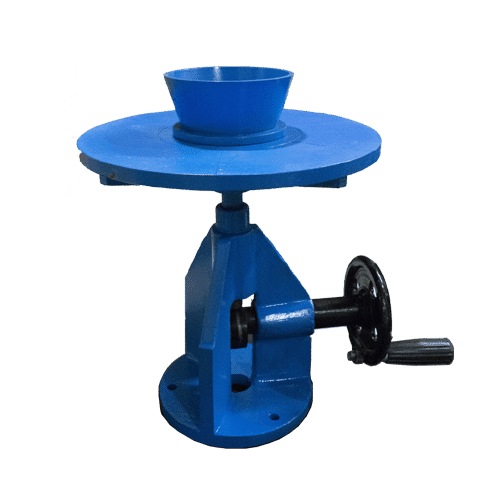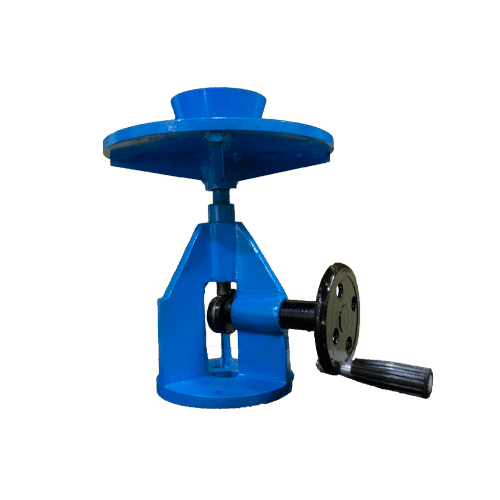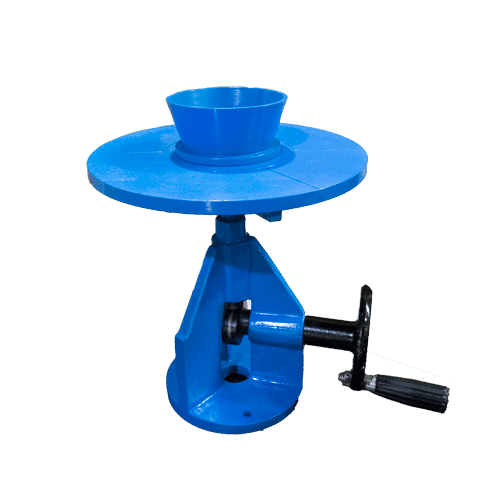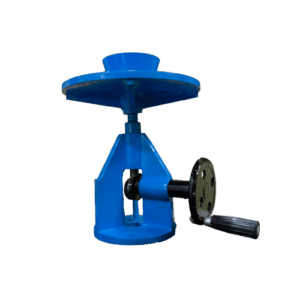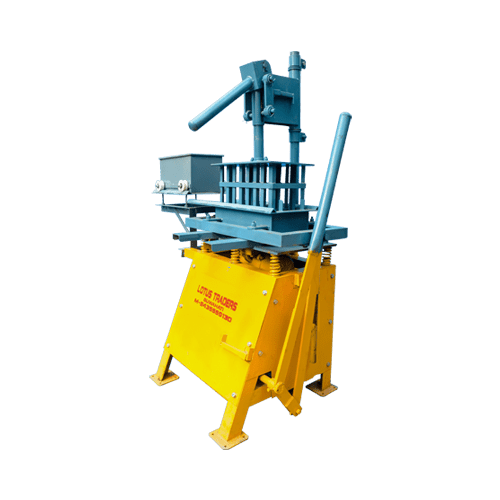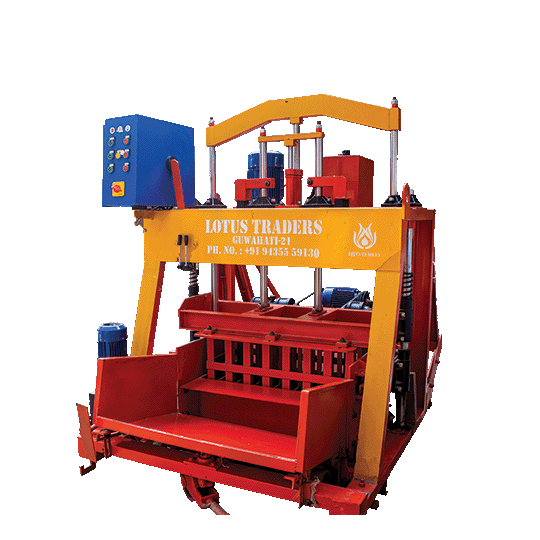Flow Table
Flow Table
- High Quality Materials
- Compliance With Standards
- Clear Product Information
- Warranty & Support
- Product Testing & Certification
- Delivery & Policy
- Ask a Question
- Estimated Delivery: 5 Days – 10 Days
- DESCRIPTION
FEATURE | SPECIFICATION |
Usage/Application | For Cement Testing |
Diameter | 30 cm |
Height of the Mould | 90mm |
Conical Mould Material | Brass |
Conical Mould Diameter | 65mm |
Flow table: Measuring concrete’s flow with perfection.
Quality and performance of concrete is critical for the longevity and durability of any structures in the construction industry. Cement test is an integral element for determining the characteristics of concrete to ensure that it meets every standard specification. The flow table ranks among the most important tools in testing cement properties used to evaluate the workability and consistency of fresh concretes. Using this tool, engineers, as well as professional in construction understand the viscosity at which, the concrete can be blended, laid down and made in order to ensure it has the necessary strength.
Table of Contents
Understanding a flow table
Flow table is one of the most important equipment that is utilized in the field of cement testing especially to check the workability and flow characteristics of freshly prepared concrete. This test is performed to measure the workability of cement mortar and concrete mixtures. Determines whether materials will flow, placement and compaction into specified shapes or container formwork without segregation. Results obtained from the flow table are very crucial as they help in determining the correct design for construction and structural integrity for different projects.
The functionality and integrity of a flow table is dependent on some key features. Robust and hard materials are used in making the main body of the fluid stream table. These materials can handle pressure and impact during analysis. Most importantly, the table is normally rested on a steady frame to maintain the integrity of the test procedures. To improve the sliding of the concrete on the test, the top surface of the table is usually a solid and level metal or glass.
Testing procedure of Flow Table
The testing procedure by using a flow table aims at systematically measuring the homogeneity and permeability of newly poured concrete. It begins with putting in a sample of the newly blended concrete inside this cast, making sure that it is well-filled with no gaps or stratification. After that, the flow mould is lifted vertically and allows for the concrete’s spreading over the flow table’s surface. A certain number of drops or strikes are applied to the concrete for the same to settle and move through the voids. Important information on the flow characteristics and work ability of the mix is obtained using this measurement of the diameter of spread of the concrete. The flow index/spread diameter is a critical parameter indicating the quality and uniformity of the concrete mix.
Significance of cement testing
In the context of cement testing, the flow table is particularly important since it determines key factors which ultimately impact on the quality and strength properties of concrete. Through measuring the flow properties of the concrete mix, it is possible for construction experts to ascertain the appropriate WC ratio for proper work ability but not necessarily for good strength development. Additionally, the flow table also ensures that any anomalies or abnormalities within the concrete mix are noted to amend them and thus achieve quality concrete mixture.
Assured quality control: flow tables are very important in ensuring that there is good quality control during the entire process. Construction companies should therefore regularly assess the workability and flow properties concrete to confirm its compliance with relevant industry standards and legal regulations on concrete. By employing a proactive strategy to quality control, one can reduce risks associated with structural defects and ensure prolonged service life of diverse infrastructure facilities. Concrete mix designs can be optimized to produce concrete with a desired strength grade and durable properties based on the results derived from flow table testing.
Advancement and modernization in concrete testing:
There have been significant improvements in cement testing over the past couple of years, which is characterised by the availability of cutting-edge flow tables that are fitted with digital display panels together with automated capabilities. Modern updates to flow tables now provide increased precision and accuracy during testing procedures while providing on-the-spot data review and detailed reports. Also, a merger of the digital elements into testing has reduced human error and speeds up assessment hence improving the effectiveness and accountability of cement testing for current building practices. The integration of digital tablets as well as self-recorded data greatly contribute towards improving the ease of using flow tables and their efficiency. As a result, these tools have become widely available and beneficial for builders and quality experts.
Flow table is a very important instrument for testing the workability and homogeneity of concrete during construction activities. The use of construction professionals ensures quality and durable concrete for structures that are strong and long lasting by giving assurance on cement testing. In conclusion, the flow table still makes significant impact to quality control and is evolving towards new technical innovations that will define best practices in the modern-day construction industry. It highlights on effective cement test procedures to achieve safe, lasting, and resistant infrastructural facilities. The information obtained from flow table assists in the optimisation of the concrete mix design to ensure that the resultant concrete has specified strength and durability properties. The construction sector is also important as it entails the investment in high-grade flow tables that are subjected to quality checks prior to use. This ensures that construction firms create enduring structures and hence maintain their integrity as well as the entire security surrounding the built condition.
Frequently asked questions
There are different types of apparatus used during flow table test they are as follows:
- Flow table.
- Abram’s cone.
- Water bucket
The value of flow table test is ranging between 0-150%. Of the viscosity of the flow of water.
A flow measurement device also known as a flowmeter is an instrument precisely used to measure the flow rate of a fluid per unit time. As per the volume/mass of the given fluid.
Flow% = (spread diameter in cm -25)/25×100
Advantages of flow table test is that the test is simple and can be used in any area. The test quickly provides a direct result about the work ability and durability of the concrete. The test is dynamic, making it special for highly thixotropic concrete mixtures.
Concrete workability basically refers to how easily freshly mixed concrete can be placed, consolidated, and finished with minimal loss of homogeneity. Generally, the workability of concrete is determined by how fluid the mix is.
The flow index is determined by measuring the area of the spread of the concrete upon the flow table, providing a value that determines the flow properties and workability of the mixture.
The flow test should be conducted during every concrete mixing process to ensure the consistency of the concrete to meet the desired outcomes.
The key factors are:
- Water-cement ratio.
- Aggregate proportions.
- Concrete consistency.
- Presence of any admixtures.


